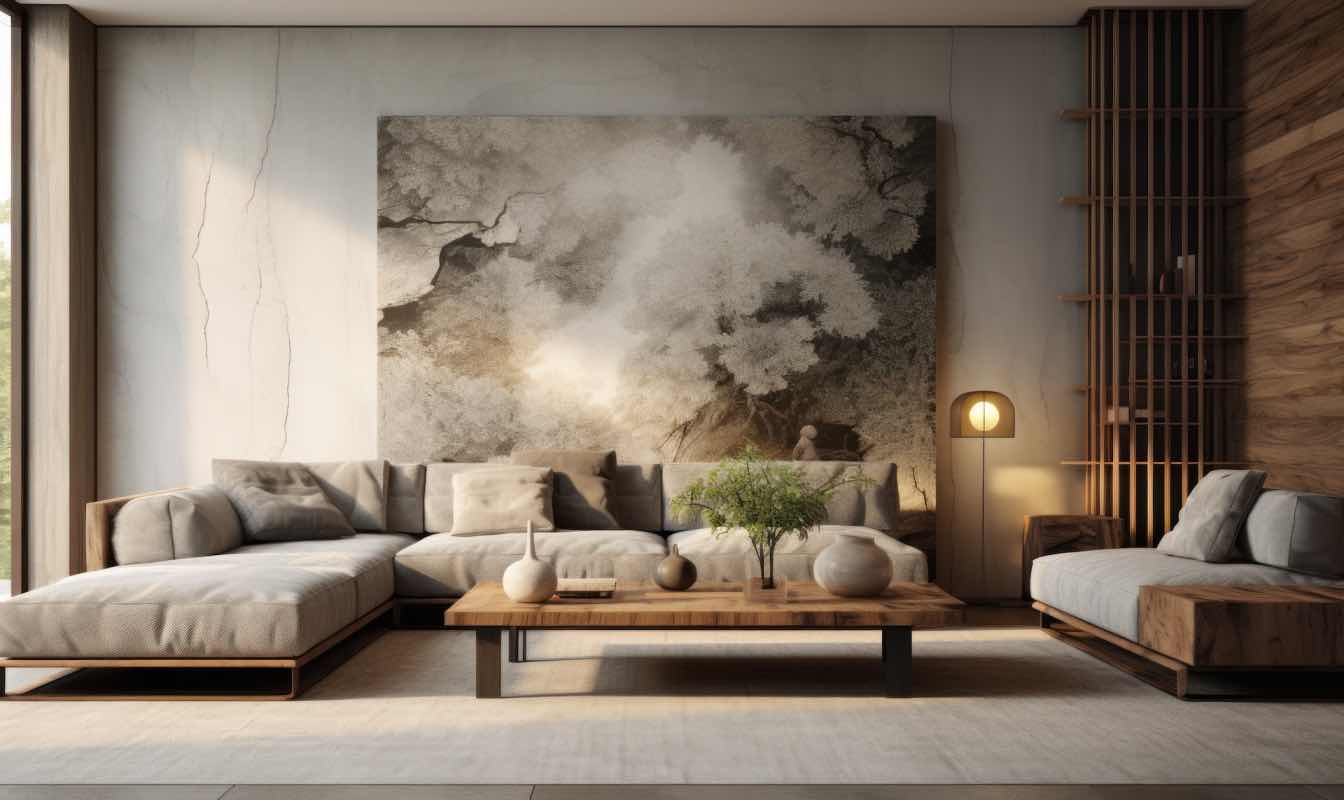When it comes to decorating your home in a way that speaks for you, the journey goes beyond your walls’ colors and furniture style, to say the least. The pieces of décor you choose to feature in your environment are low-key some of the most impactful elements that will determine your room’s feel. Whether you dream of a sleek, modern vibe, luxury flair, or abstract and almost quirky touches, you can rely on one or a few drawings to crayon the intended emotion and completely change your environment’s sense. Now, picking the one from a sea of paintings is reasonably daunting for rookies, all the more if you begin your journey humbly with a bare vision of what you want and what you like. Art doesn’t come with rules, for beauty lies in the eye of the beholder, meaning you get to decide what fits and cheers you up the most.
Nevertheless, the quest is about being as content and fulfilled with your outcome as possible, preferably for years to come. To ensure you're delighted with the result, a few key guidelines will serve as the perfect starting point for selecting a drawing that reflects your personality and artistic taste. Ready to delve deeper?
Abstract art
As the terminology implies, abstract paintings will be anything but confined within a set of interpretations. On another note, abstract drawings use all sorts of forms, colors, figures, shapes, and so on, delivering creations that have little to no connection to real-world references. If you want to associate a, say, blue brush stroke with an agitated sea wave, it’s entirely up to you—just as it’s your friend’s choice if they prefer to see it as a calm sky after rain, or perhaps something altogether different. Abstract drawings require no effort from the spectator to decode a message and remain open for interpretation; one of the strongest suits is that their charm doesn’t change with the passing fashions and trends.
You can pick compositions from abstract artists if you want to add pops of color to rooms looking wishy-washy, build personalized and one-of-a-kind looks, bring focal points to light, kickstart conversations, or simply develop a sense of energy. The only rule to remember is that there are no rules.
Dare to mix and match various sizes and fashions of abstract drawings and have fun, discovering how easily you can let your style shine through with class. With a sea of drawings for sale using different styles, the only tasks you’ll have left are determining a budget and spot to accommodate the creations and taking as much time as you need to ensure your eyed composition hits your spot. You are spoilt for choice when you go with varied, quality galleries and selections!
Expressionism
The expressionistic move led to the creation of some of today’s most recognizable representations in modern art, some of which, possibly, you’re already welcomed in your home to some extent. Edvard Munch’s The Scream and Vincent van Gogh’s Starry Night became overnight sensations, inspiring industries going beyond the art world, such as the fashion and apparel segments that have massively capitalized on their iconic imagery. In a similar way, you see viral memes today turning into global trends and, consequently, in marketing goldmines.
Unlike abstract art, which narrowly emerged in the 19th century, expressionism stood out during the late 19th and early 20th centuries. Much like the former, expressionism’s defining traits are somewhat intuitive. Expressionism prioritizes feelings over the tangible world, conveys emotions, and stirs viewers’ hearts – hence, the name. If you’ve come across a drawing that seemed a bit off, it likely was. And probably, it was crayoned by an expressionist artist. These creators twist perspectives and scales to trigger mixed feelings or highlight specific feelings. For this reason, daring, vibrant, and vivid colors and irregular contours are the movement’s hallmark. If you want something that defies traditional art’s barriers and rejects any limitation in communication, you may likely discover your ideal piece within the expressionism category.
Impressionism
From the movement’s strict founders, Pierre-Auguste Renoir and Claude Monet, to the late adherents of Paul Gauguin and Mary Cassatt, impressionism emerged and marked the 19th century. This artistic tendency was born when Pissarro, Money, and Renoir left the traditional landscape palettes behind and began painting in lighter, warmer notes. Today, the movement is recognized through its focus on light, open, and airy themes.
Still life, landscapes, and large-scale representations of important historical scenes are some of the widespread subjects you’re bound to see in expressionist drawings. Other characteristics depicting this option are daring brush strokes with intense colors, less to no color mixing, contrasts and vividly emphasized forms in bright hues, photographic influences, the motif of nature and outdoors, and landscapes eluding different weather conditions and times of the day. If your furniture, walls, and upholstery are overflowing with bold colors, you can consider balancing them with a neutral impressionistic painting for more visual harmony.
At the same time, if your room’s colors are already equilibrated, think of choosing a specific color in your environment that will dictate the drawing’s color scheme. Look for an impressionist creation that abuses a particular hue that complements an accent in your space, like the throw cushions or rug. All it takes is figuring out how the eyed artwork will interact with your room's aesthetic.
Last remarks
It’s important to pick artworks you resonate with, but this isn’t all. Consider how the chosen pieces will work together and impact other elements in your space, and learn that a movement doesn’t have to exclude the other. If you decide on a central theme connecting the two or three, you can build a cohesive collection that embraces abstract, impressionist, and expressionist artworks. Then, you can combine different styles, starting with the main elements they have in common, making the result feel harmonious.
Lastly, you’ll choose frames that complement the pieces in style and color. This will easily create a cohesive look and help your chosen artwork shine through while enjoying an aesthetically unified room.





